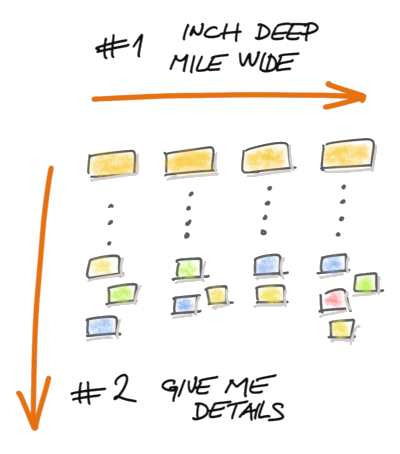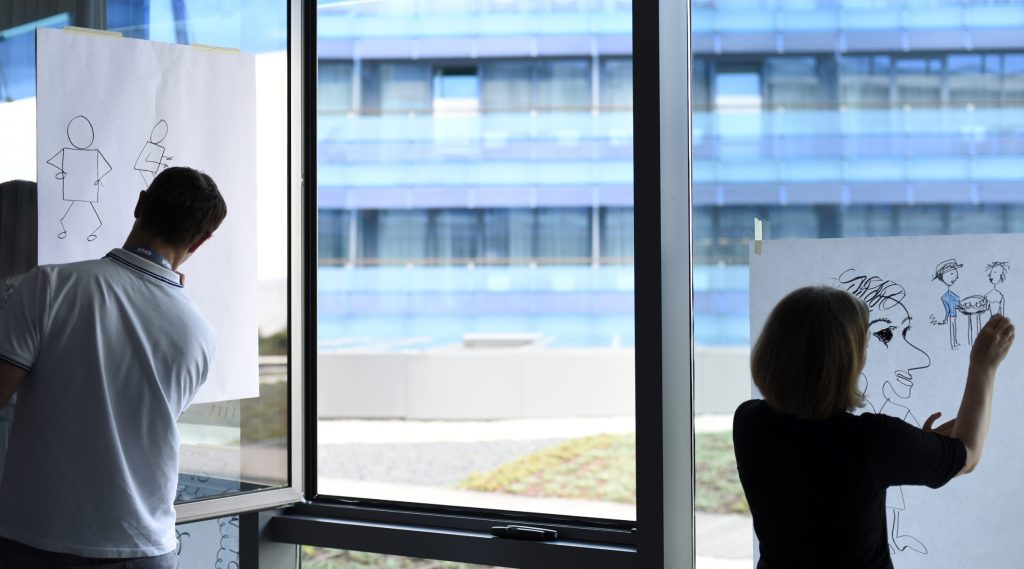In one of my recent posts, I wrote about better coaching conversations. If you have read it, you probably remember that the coach’s main coaching tool is asking questions. The better the questions, the better the result of the coaching process, because…
– Previous post
It appears that some questions are better than the others so let’s explore what makes “better coaching questions” indeed better.
They Are Open
The main characteristic of better coaching questions is that they are open, meaning that the answers to them are broader than simple “yes” or “no” and are usually longer than a single word. Such answers bring additional pieces of information and make the coachee think deeper about the problem. Some examples of open questions are:
“How can I help you?”
“What does a well-formed team look like?”
“How can we decrease the risk of the next deployment in production?”
(Note that these questions do not result in single-word answers. Not unless you’re sabotaging the conversation on purpose.)
Open questions do not lead people to a specific or preferred answer.
Leading question (bad): “Isn’t Toblerone with Salted Almond the best chocolate you have ever tried?”
Not a leading question (good): “What is the best chocolate you have ever tried?”
They Clarify the Situation
Better coaching questions help us understand the situation and broaden our knowledge. Just as good craftsperson doesn’t use a single tool for every job, we also need various types of questions for various needs. The first group of questions helps us understand the bigger picture. It’s an approach known as Inch deep, mile wide. Its goal is to understand the situation from different points of view without going into the details. We are sketching a map of the situation that needs solving by making the coachee express everything on their mind without going into the details (we’ll discuss the details later down the road). Good examples of questions from this category are:
“What’s on your mind?”
“What’s the problem?”
“And what else?” (when we want to identify all the problems, not just the first one)
Once we have grasped the bigger picture and have a rough outline of the map towards our solution, we need the second group of questions that dive into the details so we can understand the cause-and-effect relationships between events and formulate a hypothesis for improving the situation. We say “hypothesis” instead of “solution” because these are “possible solutions” and we cannot be sure that they will work. Our hypothesis will be the basis of future experiments/pilots/PoCs which will help us prove or reject the hypothesis in controlled environments. Only then do the “possible solutions” become “real solutions” that can be rolled out. Good examples of questions from this category are:
“How did this situation occur?”
“What proof/data do you have to support your thoughts?”
“What are your expectations?”
“What actions have you tried so far?”
…and techniques such as Systems Thinking and 5-Why.
To put it simply: We use the first group of questions to identify everything on the coachee’s mind, and the second group for going into the details of each problem.

They Open Up New Perspectives
Sometimes the coachee becomes a slave to their own perspective. By changing their perspective, we can show them a completely new way of defining problems and formulating hypotheses. Some good questions for opening up new perspectives are:
“How would your colleagues describe this situation?”
“What about your best friend?”
“What would the person you see as your professional role model do in this situation?”
“What would you do if you were the leader/manager/CEO?”
“If this situation were happening in a different context, what would be different and what would you do?”
They Steer Towards Out-of-the-Box Thinking
It frequently happens that the coachee is stuck so deep with their thoughts on the problem that they take certain contextual constraints for granted. Making them aware that such constraints may exist and motivating them to think out of the box by using What-If questions, we inspire the coachee to think about what would be possible if there were no such constraints. Some examples of questions inspiring out-of-the-box thinking are:
“What kind of results would satisfy you? What kind of results would make you even happier?”
“Imagine if none of your colleagues were yet employed and you were interviewing them for a position. Who would you employ and who would you reject?”
“Imagine that the project is at its start. What rules would you set from the beginning?”
“What process is the team following today? What rules/limitations do you see? Why are they set? What if some of those limitations were not to exist? How would that affect the way team functions?”
They Do Not Judge
Better coaching questions seek to explore without judging. We aim to explore the situation and learn something from it, instead of pointing fingers and placing blame. A badly posed question is for example, “Why did you invite her to the meeting?” Although this question could be asked in a constructive way, it seems that it most often causes a feeling of guilt and being attacked.
“Why” is a dangerous word for starting questions because it creates a situation where the person feels they need to be defensive. Instead, it is much better to formulate these questions in another way, e.g., “What were your expectations of her participation at this meeting?” The goal of a coaching conversation is to learn something new and gain more trust, not to make enemies.
Enough, I understand, where are those better coaching questions? Show them to me.
Hehe, there is no single official list that gives away all the questions. However, I can guarantee you that by practicing coaching conversations you will find a combination of questions that is perfect for your environment and organizational culture. In order to help you get to your own list – apart from the book that I have already recommended in my previous post – here is one more interesting list of questions you can experiment with. Kudos to Katie Anderson (@kbjanderson) for publishing this list.

Katie Anderson on Twitter (https://twitter.com/kbjanderson/status/916066829516156929)
And one final question for you: Isn’t this the best article you have ever read about questions?

